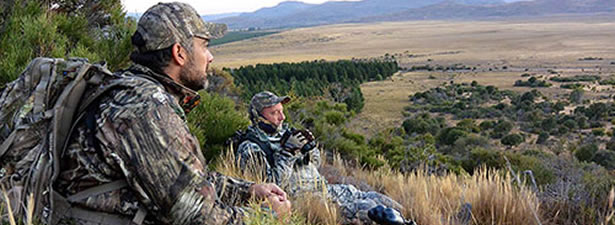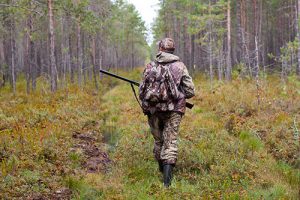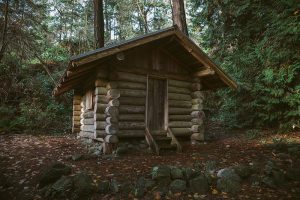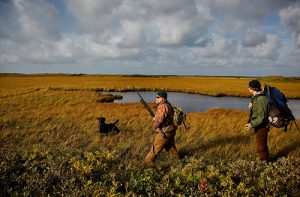How to Survive if you Get Lost Hunting

If you are a deer hunter, you may or may not have experienced getting lost in the woods. While getting lost while deer hunting is becoming less common as global positioning systems (GPS) become more readily available, it is best that every hunter goes into the woods prepared for anything.
 It’s possible that your GPS will fail you by running out of battery, or by being out of reach of a satellite. Even though it is not as common as it used to be, every deer hunter should be prepared to survive in any situation.
It’s possible that your GPS will fail you by running out of battery, or by being out of reach of a satellite. Even though it is not as common as it used to be, every deer hunter should be prepared to survive in any situation.
1: Avoid Getting Lost
The first step in any survival technique is always prevention. If you know how to avoid getting lost, you will be much less likely to get lost while deer hunting.
Make sure to bring a good compass on every deer hunting trip, and be sure that you know how to use it. Tell other people where you will be going for deer hunting and when you expect to be back so that they can notify authorities if you are late returning home.
 Purchase a topographic map of the area you will be hunting in, and circle the exact spot where your deer stand is so that any search and rescue team who finds the map will be able to get you.
Purchase a topographic map of the area you will be hunting in, and circle the exact spot where your deer stand is so that any search and rescue team who finds the map will be able to get you.
Leave this map in your vehicle or with the person who knows the location of your deer stand. Make sure that you take a cell phone with a full charge, and check periodically to see which areas have service.
You can also use color marking ribbons, available at sporting goods stores, to mark your trek. If you follow these tips, it is unlikely that you will get lost, but it is still important to know how to survive if you do get lost.
2: Have The Proper Equipment
In a survival situation, having the proper equipment can make all the different. Most deer hunters carry a knife, whether a boot knife or otherwise, which is one of an essential tools for survival. If can be used to chop, cut, puncture, slash, and also for self-defense against any wildlife.
 A knife is also helpful in creating other tools that you may need. You might also want to consider carrying water purification drops.
A knife is also helpful in creating other tools that you may need. You might also want to consider carrying water purification drops.
You can use these to make potable water from any surrounding body of water. These are available in both liquid and tablet form and are very lightweight.
You can use them even if you aren’t in a survival situation and carry less water in with you. A lighter is also a smart tool to bring.
It is light enough to throw into any pocket and will ensure that you can make a fire rapidly. You may also want to carry a small flashlight and an emergency blanket in case you need to stay in the woods overnight.
Temperatures drop pretty quickly overnight, especially during deer season, and you will want to avoid getting hypothermia. For the same reason, make sure to dress in layers, not only for your safety during deer hunting but also in the case of a survival situation.
3: STOP And Think
The Boy Scouts have a technique that they follow should they ever get lost in the woods: Stop, Think, Observe, Plan, or STOP.
Once you have figured out that you are lost in the woods, you are going to want to remain calm. It is important not to act hastily, as this can cause more harm than good.
Start by trying to retrace your steps back to the trailhead. If this doesn’t work, you’ll need to find a source of drinking water.
If you brought water purification tablets, any stream, lake, or pond would suffice. If you forgot your purification tablets, you will need to boil any water you harvest before you drink it to kill off any harmful bacteria it may contain. For this, you will need a fire.
4: Build A Fire
You’re going to want to make a fire after you have found your water source. Fire is helpful not only for boiling water to remove anything toxic but also for keeping up your body temperature and drying out any clothing that may have gotten wet during the day.
 This is essential in avoiding hypothermia. If you brought a lighter and can find dry brush, starting a fire shouldn’t prevent much of a problem.
This is essential in avoiding hypothermia. If you brought a lighter and can find dry brush, starting a fire shouldn’t prevent much of a problem.
Create a cone shape from some small twigs and branches, and place your tinder material (dry brush, dry tree bark, etc.) in the middle of the cone.
Then, simply use your lighter to light the tinder, and gently blow on it to feed the fire. If you forgot a lighter, but have anything with a lens (binoculars, glasses, a camera), you can use that to magnify the sun’s rays to ignite the tinder.
If all else fails, you will need to use the “fire-plow” method. For this to work, you need to find a soft piece of wood, cut a groove in it with your boot knife, put some tinder at one end, and start scraping a hardwood stick back and forth until the kindling catches.
5: Make A Shelter
A shelter is necessary for getting a good night’s rest. It will protect you from wind and rain during the night while you sleep. Your best option for a shelter is something that already exists. Look for any empty caves that might be around.
 These do a better job of protecting you from the elements than a lean-to will, but make sure that it is not inhabited by any other animals. If you cannot find an empty cave, you can create a lean-to.
These do a better job of protecting you from the elements than a lean-to will, but make sure that it is not inhabited by any other animals. If you cannot find an empty cave, you can create a lean-to.
Lean a large tree branch up against a tree, and then place smaller branches so that they are leaning against the large branch at an angle. Cover this structure with leaves and other flora.
6: Find Food
If the snacks you brought to eat while deer hunting are depleted, you are going to need to start finding some food. Being a deer hunter, you may consider hunting animals to eat, and that is not a bad idea.
If you want something other than meat, though, look for any plants that you recognize as edible. If you are unsure of whether or not a given plant is edible, do not eat it.Hopefully, by this time someone is on their way to rescue you. Make sure that you haven’t strayed too far from where you indicated to your friends that you would be going so that a rescue attempt can go smoothly.
![]()
About the Author
 Kristopher M. Samson is the founder of Thehuntercity. This blog focuses on hunting. As in his experienced, he will guide you through the Do’s and Don’ts of the hunting world and transform you into a better hunter. Whether you are an experienced hunting or an absolute beginner, you will find Thehuntercity a gem!
Kristopher M. Samson is the founder of Thehuntercity. This blog focuses on hunting. As in his experienced, he will guide you through the Do’s and Don’ts of the hunting world and transform you into a better hunter. Whether you are an experienced hunting or an absolute beginner, you will find Thehuntercity a gem!
All content and images provided by Kristopher M. Samson.
--
